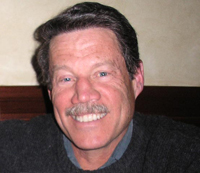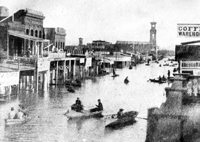
Dave Reynolds
|
|

|
|
Click image for more details | |
|
Contact: Dave Reynolds
|
|
Dave Reynolds Recognized at 2012 California Extreme Precipitation Symposium
Several papers dealing with the meteorology of the 1861-62 events concluded that the driver behind the extreme rainfall was a series of Atmospheric Rivers (AR) that struck along the entire West Coast from Oregon to Southern California from December 1861 to January 1862. No single AR is thought to be more significant than recent land-falling ARs, which struck California and the West Coast during the operating period of the Hydrometeorology Testbed (2004-present). However, it was the frequency and duration of the events that led to the catastrophic flooding experienced in Sacramento, and the eventual raising of the city by some 8 to 10 ft. so that it could remain the state capital.
Because of the HMT and our understanding of the important role ARs play in flooding in California, discussions of how best to protect the urban areas from the 200-year flood included not only structural improvements such as levee repairs and raising dam heights and increased spillway capacity, but also forecast-coordinated reservoir operations utilizing the 21st Century observing network the California Department of Water Resources is installing over the next few years based on the results of and as a legacy to NOAA's HMT-West program.
Dave Reynolds, who is currently working with NOAA's Earth System Research Laboratory through a University of Colorado Cooperative Institute for Research in the Environmental Sciences appointment and recently retired as the Meteorologist in Charge of the San Francisco Bay Area National Weather Service Forecast Office, was the recipient of the Symposium's Special Recognition Award. This award was presented to Dave "in appreciation and recognition of your contributions over 40 years to improving weather forecasting and operational hydrology."